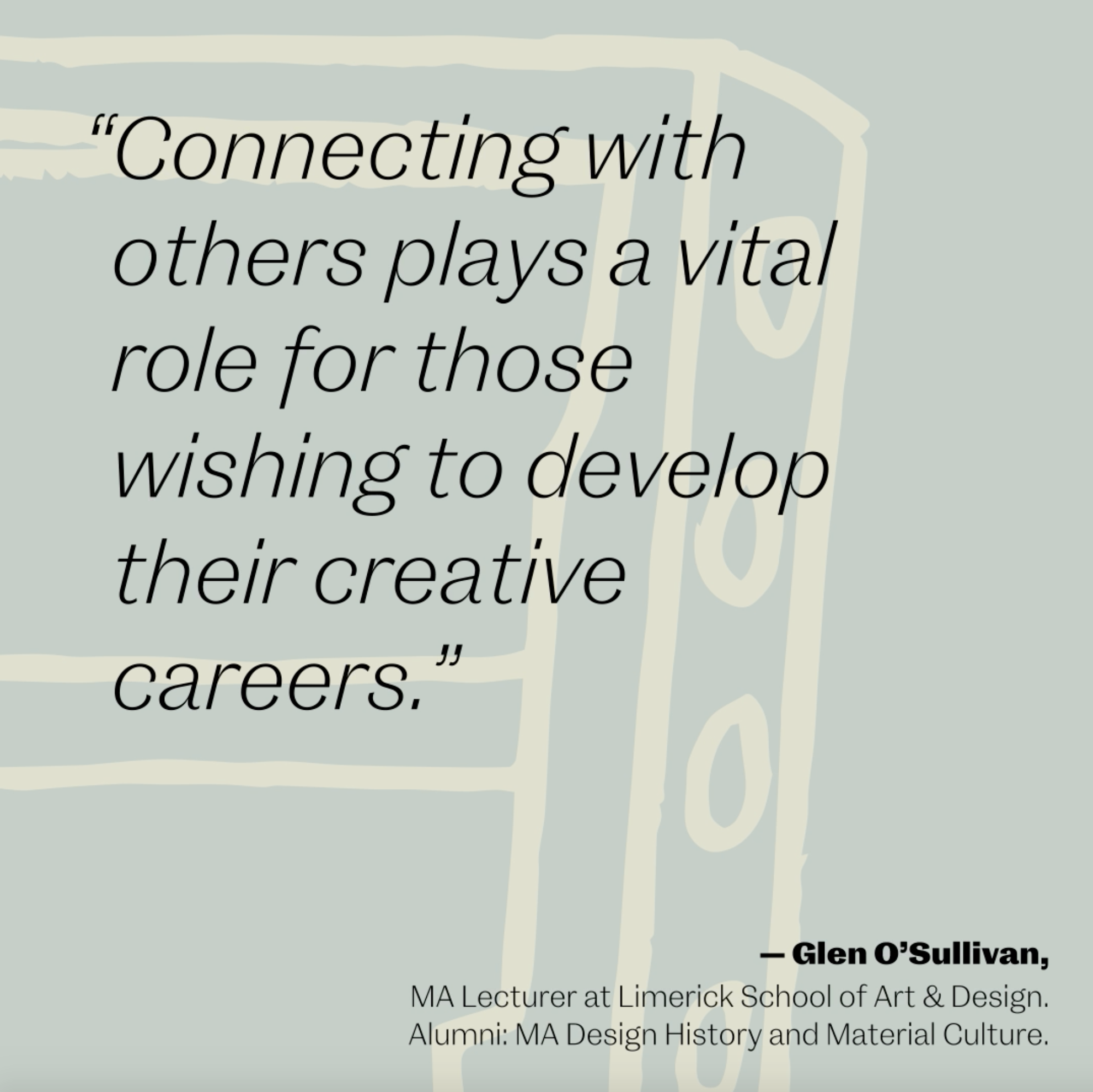Alumni Stories - Glen O’Sullivan
"I found that the best thing about being an NCAD student is the camaraderie with your peers and the continued support from staff who share your interests and underpin your endeavours"

Name: Glen O’Sullivan
Current Career: Programme Leader, MA Interdisciplinary Design. Lecturer, Critical and Contextual Studies (CCS) Limerick School of Art & Design (TUS)
Graduation Year: 2014
Discipline: MA Design History and Material Culture
Location: Limerick, Ireland.
What career path did you want to follow as a child?
As a child I always had a particular interest in art, specifically drawing. It was my go-to line of inquiry for trying to understand something better. As time went on, I learned to interpret visuals and take notice of any words that came to mind, and translate these ideas back into more pictures, and more words again. At an early age I think the process catalysed a deep appreciation of – and affection for – art, design, and visual culture.
The dream was always to work within some creative field, or related sphere to the many that weave in and out of art and design. Now, I couldn’t see myself doing anything else really.
Why did you decide to study at National College of Art & Design?
I have a huge grá for Irish design and I had heard very good things about NCAD. I came from undergraduate study at another school of art and design and wished to progress my studies at a school that held equal global recognition and the same commitment to art and design education.
For me, NCAD’s offer of pursuing study on the MA in Design History and Material Culture programme provided a unique hook and coveted specialisation.
I decided to apply for MA DHMC because I am very interested in peoples’ relationships with designed objects, interiors, spaces, and places, especially the everyday, utilitarian, and overlooked.
My MA research has its origins in addressing the gaps in erudition about wayfinding technologies and Dublin’s early twentieth-century electric tramway network. I brought forth and combined a number of complementary disciplines – some from experiential knowledge, and others that I was open to learning more about – such as graphic design, design history, material culture, cartography, sociology, and so on.
I found that the best thing about being an NCAD student is the camaraderie with your peers and the continued support from staff who share your interests and underpin your endeavours.
How did you develop your career towards your current job / practice?
Obtaining the MA degree equipped me with a desirable qualification for teaching at Third Level. Shortly after completing my studies at NCAD, I got a job teaching Critical and Contextual Studies (CCS) at IADT in their Design and Visual Arts department. During this time, I made a conscious effort to keep an eye out for interesting conference themes and calls for participation, and secured opportunities to present at national and global symposiums. I currently teach CCS at LSAD to all years across Design, Fine Art, and Education, and I am programme leader for the school’s MA in Interdisciplinary Design.
Tips/Advice:
Resist remaining static.
Build your C.V.
Professionalise your online presence.
Subscribe to relevant organisations.
Reach out to professionals.
Foster relationships.
Continue to elevate your knowledge.
Keep asking questions.
Briefly, tell us about one specific project or experience you found interesting, or challenging, and/or inspirational while you were studying at NCAD?
While undertaking the MA DHMC programme, the cohort had the fortunate opportunity to go on a study trip to Berlin for a few days. This was a very meaningful experience as we were exposed to design and different cultural contexts situated before one’s eyes. Similar to other briefs throughout the programme, these first-hand observations allowed for a greater understanding and a deeper level of learning. Of course, the independent time we had to ourselves wasn’t too bad either!
If you were chatting with current NCAD students today what is the one piece of advice you would offer?
Take advantage of all the wonderful assets available to you. There are an array of resources and provisions right at your fingertips: staff expertise, interdisciplinary conversations, the libraries, nearby cultural institutions etc.
What in your opinion are the most meaningful opportunities for those pursuing creative careers today?
Connecting with others plays a vital role for those wishing to develop their creative careers. Keep an eye out for any exhibitions, cultural events, and conferences that might be to your liking, and go to them. Subscribing to organisations like the Design History Society, Design Research Society, and College Art Association can also provide desirable opportunities for networking where stimulating conversations are ignited and meaningful connections are made
